The familiar creaking, squeaking and groaning that meant we were cutting through thick ice returned on Monday morning. 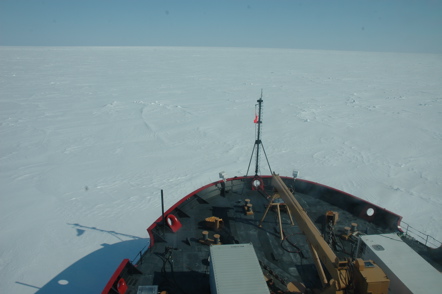
Listen to the following clip to hear the sound of the Healy breaking through the ice...
Returning to the ice meant seal-spotting was in full swing on The Bridge. The Bridge is the area where the captain and crew can lookout over the ice as they steer. By 10am thirteen seals and their pups had already been spotted off the starboard! Clear weather reigned and most people hunting for a seal-sighting wore sunglasses even as late as 10pm.
Monday was a transit day, meaning that the boat was enroute to a new spot where a science station would be conducted. While everyone was cleaning up from a busy weekend, for many it meant that there was time to enjoy the scenery and explore the boat. I did both.
Around lunchtime, I looked out across the horizon with my binoculars and saw something a bit darker than it's surroundings moving across the ice. Bingo! It was a Spotted Seal! Spotted Seals, also known as Larga Seals, live only in the north Pacific Ocean and surrounding seas. They are known for their habitat choice of sea ice rather than beaches or open water. From the ice, they dive to catch cod, shrimp and pollock. Pups are born between early-April and May and are nursed for only 3-4 weeks. After this they are on their own to begin hunting for fish, using their front flippers to move across the land and their back flippers for swimming.
The seal on the ice was using her front claws to crawl forward and I fumbled to get my camera ready, hoping to catch a picture before it was too late. Cranking the door open and stepping onto the blustery deck I heard a sound like a small dog barking and looked down to see the mother seal moving towards her pup. She inched across the ice like a caterpillar and then reached her nose out to touch the nose of a small black puff-ball in the snow, her pup! As the two disappeared from view behind the boat they looked very small in the vast icy landscape. Here they are pretty close to the boat!
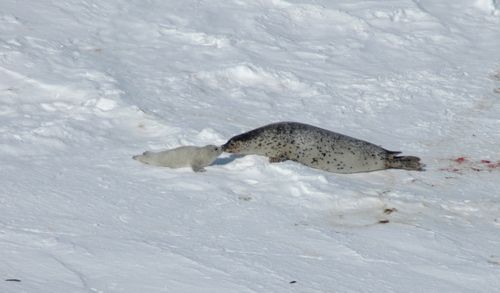
Meanwhile, inside and far below the Bridge, the engineering staff was keeping the boat chugging along through the ice. EM-1 Hans Shaffer stopped to give a few of us a tour through the belly of the Healy! Getting around this ship is like playing on a jungle gym. There are straight ladders, windy ladders, spinning door handles and cranks!
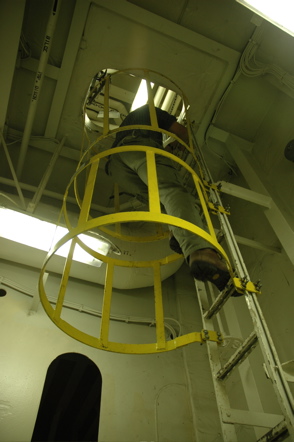
Most rooms are sealed off by water-tight, air tight doors to keep fire and/or water isolated in limited parts of the ship in case of emergency.
It takes a lot of water, fuel and power to keep a city of 130 people moving through the Bering Sea! The ship itself uses over 10,000 gallons of fuel per day. Before it leaves port it stocks up on 28,000 gallons of fresh water! The Healy-city goes through 12,000 gallons of water a day! Then, there's the process of turning on the lights! At any given moment 6,600 volts of power are being cycled through the ship from it's very own electric company out to the staterooms, refrigerators and engines. Generators, transformers and lots of colored lights in the "Cycloconverter Room" keep the ship lit and humming through the Bering Sea everyday. Take a look at some of these machines...
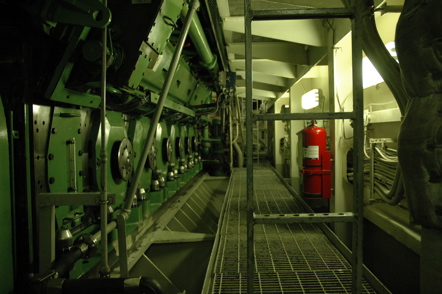
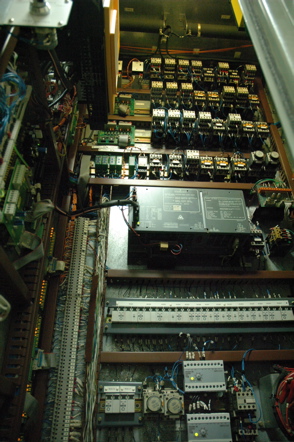
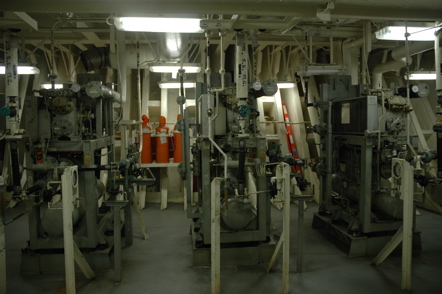
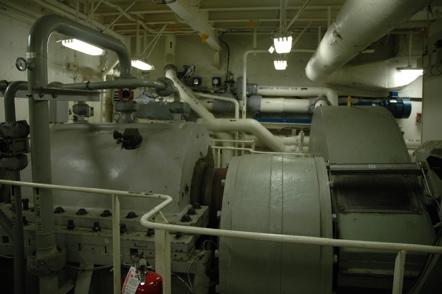
And the answer to yesterday's mystery... Pressure caused the Styrofoam cup to shrink. I sent that cup down to the ocean floor, attached to the Multi-corer! At two miles down, the pressure on the ocean floor can reach crushing proportions, enough to crush this little cup for certain! To figure out how many pounds of pressure were pushing on the cup, multiply 270 atmospheres by 15 pounds of pressure per square inch. This is about how much pressure there was. 270 x 15 =?
Stay tuned for more adventures on the ice and in the kitchen!


Comments